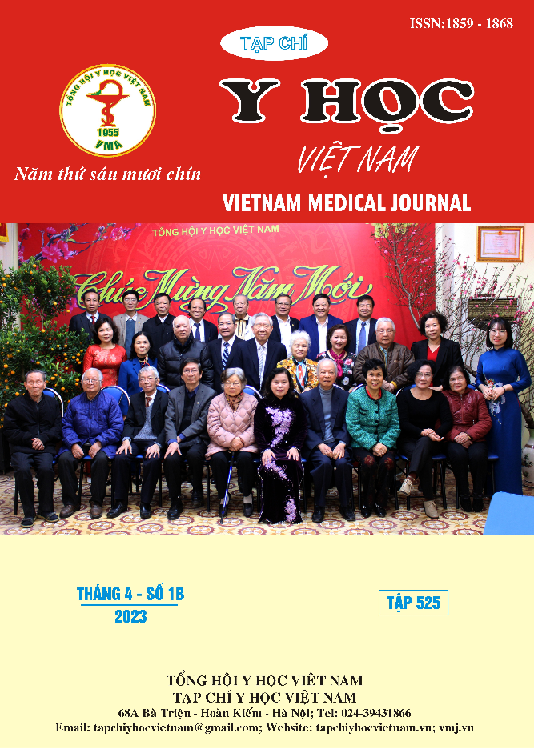THREE-DIMENSIONAL ECHOCARDIOGRAPHY TO ASSESS LEFT VENTRICULAR DYSSYNCHRONY AND PREDICT REMODELING IN AMI PATIENTS AFTER PCI
Main Article Content
Abstract
Aims: To assess the value of three-dimensional echocardiography (3DE) parameters of LV volumes and systolic dyssynchrony index (SDI) for the prediction of LV remodeling after acute myocardial infarction (AMI) and to compare them with two-dimensional echocardiography (2DE) parameters. Methods: 2DE and 3DE were performed in 109 patients with AMI within 3 days from the onset of MI and 12 months after percutaneous coronary intervention (PCI). LV remodeling was defined as a ≥15% increase in the LV end-diastolic volume at follow-up. SDI was calculated as a standard deviation of the time from cardiac cycle onset to minimum systolic volume in 17 LV segments. Results: LV remodeling was identified in 52 (49,1%) patients using 2DE and 46 (42,2%) patients using the 3DE method. Evaluated 3DE parameters, such as EDV [area under the receiver operating characteristic (ROC) curve (AUC) 0.78, sensitivity 72,4%, specificity 79,5%], end- systolic volume (AUC 0.73, sensitivity 70,7%, specificity 78,3%), SDI (AUC 0.79, sensitivity 81,6%, specificity 85,9%), had significant prognostic value for LV remodeling. According to the AUC, SDI had the highest predictive value. Conclusion: 3DE volume parameters, especially 3D SDI, play important roles in the prediction of LV remodeling after AMI and can be used in clinical practice.
Article Details
Keywords
3D echocardiography, systolic dyssynchrony index, left ventricular remodeling, myocardial infarction
References
2. Nguyễn Thị Thu Hoài, Nguyễn Thị Thanh Nga, Đinh Thị Thu Hương, Đỗ Doãn Lợi, Nguyễn Lân Việt (2013). “Giá trị dự báo tái cấu trúc thất trái của mất đồng bộ tim đanh giá bằng siêu âm Doppler mô cơ tim ở bệnh nhân nhồi máu cơ tim cấp có QRS hẹp được can thiệp động mạch vành”. Kỷ Yếu Toàn Văn các đề tài khoa học, Hội nghị Tim Mạch Học Miền Trung (2013).
3. Thygesen K, Alpert JS, Jaffe AS, et al., on behalf of the Joint European Society of Cardiology (ESC)/American College of Cardiology (ACC)/American Heart Association (AHA)/World Heart Federation (WHF) Task Force for the Universal Definition of Myocardial Infarction (2018). “Fourth Universal Definition of Myocardial Infarction”. J Am Coll Cardiol 2018; Aug 25
4. Lang RM, Badano LP, Mor-Avi V, Afilalo J, Amstrong A, Voigt JU et al (2015) “Recommendations for Cardiac Chamber Quantification by Echocardiography in Adults: An Update from the American Society of Echocardiography and the European Association of Cardiovascular Imaging”. J Am Soc Echocardiogr 2015;28:1-39.
5. Sonne C, Sugeng L, Takeuchi M, Lang RM, et al (2009). “Real-time three dimentional echocardiographic assessment of left ventricular dyssynchrony” J Am Coll Cardiol Cardiovascular Imaging 2009;2: 802–12
6. Visser CA. Left ventricular remodelling after myocardial infarction: importance of residual myocardial viability and ischaemia. Heart 2003; 89: 1121-2
7. Gaudron P, Eilles C, Kugler I, Ertl G. Progressive left ventricular dysfunction and remodeling after myocardial infarction. Potential mechanisms and early predictors. Circulation 1993; 87: 755-63.
8. Zaliaduonyte-Peksiene D, Vaskelyte JJ, Mizariene V, Jurkevicius R, Zaliunas R. Does longitudinal strain predict left ventricular remodeling after myocardial infarction? Echocardiography 2012; 29: 419-27
9. Yang NI, Hung MJ, Cherng WJ, Wang CH, Cheng CW, Kuo LT. Analysis of left ventricular changes after acute myocardial infarction us- ing transthoracic real-time three-dimensional echocardiography. Angiology 2008-2009;59: 688-94
10. Vieira ML, Oliveira WA, Cordovil A, Rodrigues AC, Monaco CG, Afonso T, et al. 3D Echo pilot study of geometric left ventricular changes after acute myocardial infarction. Arq Bras Cardiol 2013; 101: 43-51


